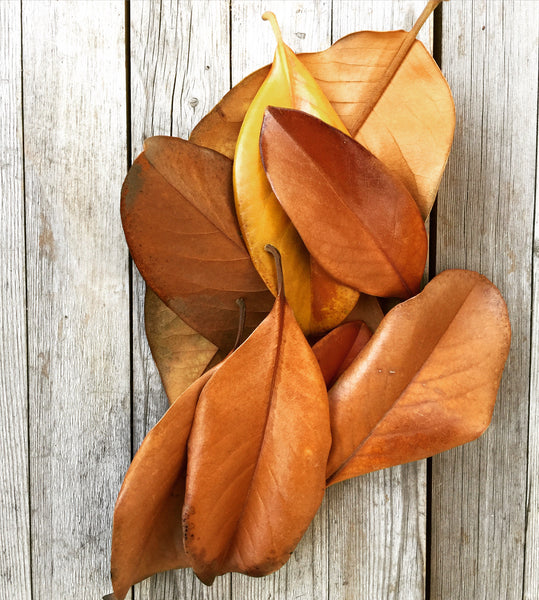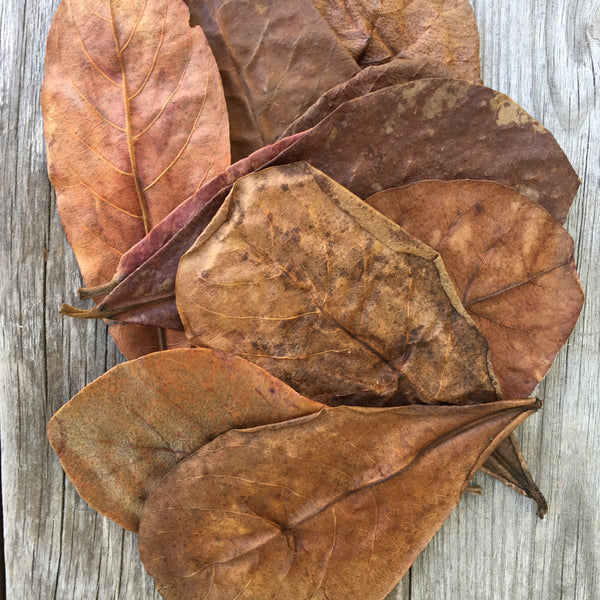- Continue Shopping
- Your Cart is Empty
Falling leaves, rising excitement!
The more I see fellow hobbyists playing with blackwater, botanical -style aquarium around the world, the more I see things that used to be "unusual" or "uncommon" becoming just another way to run an aquarium.
A real mindset shift!
One of the best things that I've seen come out of this whole mindset shift has been hobbyists working with leaves in their aquariums...Not just tossing a few in there; rather, creating actual leaf litter beds such as you might encounter in nature. And making stunning observations and achieving compelling results when properly executed.

Of course, there are still many hobbyists who perhaps need that final "nudge" to attempt one of these in their aquariums, so let's touch on this one more time, okay? I think that embracing this little niche in our aquariums makes a lot of sense- because they're so pervasive in nature.
Leaf litter zones comprise one of the richest and most diverse biotopes in the tropical aquatic ecosystem, yet, until quite recently, they were seldom replicated in the aquarium to any great extent. I think this has been due, in large part- to the lack of understanding by the hobby community as a whole about the way these environments exist and function in nature.

And, like any environment, leaf litter beds have their own "rhythm", fostering substantial communities of fishes. The dynamic behind this biotope can best be summarized in this interesting excerpt from an academic paper on Blackwater leaf-litter communities by biologist Peter Alan Henderson, that is useful for those of us attempting to replicate these communities in our aquaria:
"..life within the litter is not a crowded, chaotic scramble for space and food. Each species occupies a sub-region defined by physical variables such as flow and oxygen content, water depth, litter depth and particle size…
...this subtle subdivision of space is the key to understanding the maintenance of diversity. While subdivision of time is also evident with, for example, gymnotids hunting by night and cichlids hunting by day, this is only possible when each species has its space within which to hide.”
In other words, different species inhabit different sections of the leaf litter, and we should consider this when creating and stocking our aquariums. It makes sense, right? I mean, a leaf litter bed is a physical structure, temporal though it may be- which functions like a pile of wood, a reef, rocks, or other features in the benthic environment.
Like its wild counterpart, a leaf litter layer in an aquarium performs a variety of functions, including aesthetic, biological, and chemical affects. A blackwater biotope aquarium with a diverse assemblage of botanical materials performs much in the same ways as a "refugium" does in a reef aquarium environment, providing a haven for many life forms and processes, which impacting the display aquarium by providing biological support/diversity, supplemental food production, and chemical enrichment.
Blackwater, which we have come to love, is also known to reduce the amount of micro algae in an aquarium, both as a result of the chemical properties imparted into the water, reduced nitrates and phosphates, as well as the brownish visual tint, which serves as a natural "light diffuser."
And of course, understanding the progression of how things happen to leaves once submerged in our aquariums is of the utmost importance, right? And we all know by now that leaves, once submerged, DO break down.
And of course, stuff breaking down in our tanks requires a little understanding.
Tannins and humic acids are released into the water as the cell walls break down, along with other organics. Often times, a "biofilm" of bacteria will form on the surfaces of a botanical after it's submerged for some period of time. In the case of leaves with "cutting" layers, like Magnolia, for instance, the thick outer layers last a pretty long time, while the softer, inner layers tend to decompose more quickly, fostering bacteria and other microfauna in their structure.
And of course, creating leaf litter beds in an existing aquarium would require the utmost in that scarce hobby commodity: patience. Leaves are dynamic, because they're actively interacting with the aquatic environment: Releasing substances into the water, as well as providing forage for fishes, crustaceans, and microfauna, all of which contribute to the bioload of your system.
And, as every experienced hobbyist knows, nothing good ever happens quickly in an aquarium- only the bad stuff! So, we admonish you yet again to go slowly in an existing tank, letting your animals, plants and microfauna make the adjustment to a new, dynamic and ultimately beneficial environment.

Leaves and such are simply not permanent additions to our 'scapes, and if we wish to enjoy them in their more "intact" forms, we will need to replace them as they start to break down.
This is not a bad thing. It is simply how to use them to create a specific aesthetic in a permanent aquarium display. Much like flowers in a garden, leaves will have a period of time where they are in all their glory, followed by the gradual, inevitable encroachment of biological decay. At this phase, you may opt to leave them in the aquarium to fully decompose and enrich the environment further (and offer a new aesthetic!), or you can remove and replace them with fresh leaves.
Simple.
And you know what's most interesting to me?
Aquariums set up with leaf litter beds are among the most stable, consistent aquariums I've ever worked with. Not just from a water chemistry standpoint, but from a maintenance and functionality standpoint. With simple practices, such as regular water exchanges, careful feeding, gradual stocking, and regular replacement of decomposing leaves, the essential water chemistry parameters (ie; pH, nitrate, phosphate, etc.) are incredibly stable.
And happily, I'm not the only one who's experienced this. Many of you who've played with leaf litter in your tanks are experiencing the same thing.
THAT is exciting!

I hope that this latest of my semi-regular pleas to convince you to play with leaves in your aquariums has nudged you to give them a try in YOUR tank!
You might just discover something really cool!
Stay brave. Stay curious. Stay dynamic. Stay experimental. Stay patient...
And Stay Wet.
Scott Fellman
Tannin Aquatics













Scott Fellman
Author